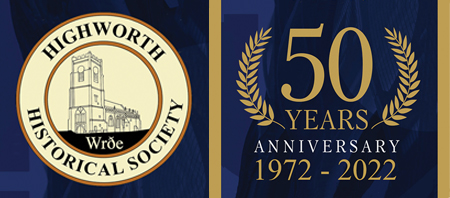Lest We Forget Continued (page 10)
The crew of HM Submarine P38 are commemorated by name on Panel 68, Column 3 of the Plymouth Memorial, Devon. The memorial is situated centrally on the Hoe which overlooks directly towards Plymouth Sound. It is accessible at all times and there is car parking nearby.
Before joining the Royal Navy, Clarence Durnell lived with his parents, Albert and Louisa Maud Durnell, at Church Walk, Swindon Road, Lower Stratton, Swindon. He was educated at Sandford Street School, Swindon, and was apprenticed to boiler making in the GWR works, Swindon. He was also a member of Stratton Green Baptist Church, and was in the local Home Guard before joining the Royal Navy. His mother Louisa Maud Durnell, (nee Archer) was the cousin of Jack Archer of Highworth.
D/JX364468 Able Seaman Frank HIGGS volunteered for the Royal Navy in 1942, at the age of eighteen years old. He served on the destroyer HMS Scorpion as a gun-layer on 4.7 guns. The ship’s home base was at Scapa Flow. Frank served on one Malta and eight Russian convoys. Many Arctic convoys to Murmansk in Russia were in total darkness, mountainous seas, ice and snow blizzards with poor visibility.
During a visit to the Faroe Islands, Frank met Bill Farmer of Highworth, who served on HMS Belfast. A week before the Belfast was involved in the sinking of the Scharnhorst Bill was transferred to the Aircraft carrier HMS Formidable where he fought in the Far East against the Japanese. As the year 1943 drew to a close Frank Higgs‘ ship, the Scorpion, was involved in the sinking of the German battle-cruiser Scharnhorst. While the Scharnhorst remained in the Alten Fiord, North Norway, she imposed a constant threat to the Allied convoys operating between Iceland and the North Russian port of Murmansk. Towards the end of December 1943, intelligence reports reaching the Admiralty confirmed that Scharnhorst had sailed north to intercept the east-bound convoy JW55B. To counter the threat and hopefully trap the German raider, units of the Home Fleet raced through the wild Arctic seas to intercept. The British battleship Duke of York, with the cruiser Jamaica and the destroyers Savage, Scorpion, Saumerez, and Stord with a Norwegian crew, sailed north-eastward trying to shadow the convoy. On the morning of the 26th December, HMS Belfast, who had been helping to escort a returning convoy RA55A, which had sailed from Murmansk on the 23rd, picked up the Scharnhorst on her radar at a distance of seventeen miles. Steadily closing in for the kill at 16.50 hours the heavy guns of the Duke of York and Jamaica thundered out to inflict much damage on the enemy ship. It was now the turn of the British destroyers and Saage, Saumarez, Scorpion and Stord came racing in to within 2000 yards of Scharnhorst, braving the guns of the enemy to fire torpedoes. In this head-on attack at least four torpedoes smashed into the hull of the German vessel.
At this time Able Seaman Frank Higgs, (HMS Scorpion) was firing star-shells to light up the enemy ship. Closing in, Jamaica and Belfast each fired three torpedoes, followed by further attacks by the destroyers. At 19.45 hours Scharnhorst, after an enormous explosion, moved forward, her bows deepening and rolled over and disappeared. Of her complement of almost 2,000, only thirty-six were saved. HMS Scorpion picked up survivors which were transferred to the Duke of York on arrival at the Russian port of Kola. Among the survivors was an American whose parents were German and who had lived in America before the war. When war broke out they returned to Germany and, although their son was American by birth, he was called up to serve in the German Navy. Frank said he was well liked by the British crew-members, having told them which prisoner was a member of the German Gestapo, of which all German ships had one on board. The battle of North Cape, as it was called, constituted the last time that battleships were engaged in a running fight in the style of the First World War Battle of Jutland in 1916. By a strange coincidence Frank Higgs‘ father, also Frank, fought in the Battle of Jutland as a signal-man on HMS Warrior. Frank senior served for twelve years in the Royal Navy finishing up in submarines. “Like father, like son”. Able Seaman Frank Higgs spent his twenty-first birthday at a place called Polyarnoe, in Russia and needless to say, like all good sailors, he was slightly intoxicated at the time. Polyarnoe was a place which had a large communal hall where all the Russian soldiers, sailors and civilians had their meals together.
On another occasion HMS Scorpion, skippered by a Canadian, Lieutenant Commander W.F. Clouston (who was well liked by his crew), escorted the Queen Mary (which had Winston Churchill on board on his way to meet President Roosevelt of America) to Canada. On D-Day June 1944 HMS Scorpion was at Portsmouth preparing for the invasion of France. At this time Frank Higgs met Jim Farmer of Highworth while on a few hours shore-leave. Jim was on his way back to his ship, a British Minesweeper. During the war Jim was blown up and badly injured in the Mediterranean.
HMS Scorpion at 6pm on 5th June was escorting British Minesweepers over to clear the sea ready for the invasion. Off Sword Beach on D-Day + 1, sister ship Svenner, with a Norwegian crew, was torpedoed not far in front of Scorpion and went down fast. Frank said the Scorpion stopped to pick up survivors and he can remember a Norwegian sailor going back to rescue a small black dog which they had on board for several months after.
After helping in the bombardment off the coast of France, they were detailed to pick-up an American Admiral and bring him back to Pompey. During a return trip from Portsmouth to Normandy near the French coast they saw a mast sticking out of the sea and later learnt that it was another sister-ship, HMS Swift, which had been sunk by a mine.
Frank Higgs came home from the Royal Navy to 7 Vicarage Lane, Highworth, during May 1946. He caught the 6am workman’s train from Swindon to Highworth. The first Highworth person he saw on his arrival was Arthur Blake who was on his way to the station to catch the ‘Highworth Bunk’ to work. On his discharge from the Royal Navy, Frank was paid £76 gratuity payment. After the war he played football for Westrop Rovers FC for twenty seasons. He won several trophies in league football and six-a-side tournaments. After retiring from football he was a Football Association Referee. He has also been Hon. Secretary for Highworth Junior Football Club for well over twenty-five years.
P/MX95047 Leading Wireman Francis Charles (Bill) GORTON, Royal Navy.
After leaving school Bill Gorton started work as a clerk at Highworth Mat Factory in Brewery Street. On the 14th May 1940, Anthony Eden, Secretary of State for War broadcast an appeal for Local Defence Volunteers to defend Britain against possible parachute invasion. Bill Gorton, who was seventeen years old at the time, answered the call and went along to volunteer. Another volunteer was Bill‘s father Francis (Tich) Gorton who, during the First World War, had served with distinction in France and Flanders with the 6th Battalion Wiltshire Regiment. He had won the Military Medal for bravery in the field of battle when, single-handed, he rushed a German machine-gun nest shooting two German soldiers and killing two others with the bayonet to put it out of action.
One morning after arriving for work Bill was told by Mr Percy Clack, who also worked at the Mat factory, to report to the Local Defence Volunteer headquarters, which at that time was at the Saracens Head Hotel in the High Street. His orders were to accompany Captain Louis Cotton to Parsonage Farm fields to keep a look out for German paratroops. He was there from 9am until 3pm before the all clear was sounded. Afterwards he was instructed by Major Jennings to guard the petrol pumps outside W.L. Bartrops, (Ironmongers) shop in the High Street.
Bill Gorton was also in the local ATC and it was from there that he went for a medical to join the Fleet Air Arm. He failed, due to his eyesight, but his second choice being the Royal Navy he was called up for service on 12th January. His first ship was a Hunt Class Type 1 Destroyer (F.69) HMS Tanatside which had a complement of 168 crew and was based at Portsmouth. The next fifteen months was taken up patrolling Home Waters and the Atlantic. He then applied to do a Leading Wireman’s course, which he passed. He then served in Royal Naval barracks at Portsmouth (HMS Victory) working on torpedoes which were unloaded from an old French ship and made ready for distribution to destroyers which had torpedo tubes.
When Bill Gorton reported for work on the 5th June 1944, Portsmouth Harbour and Southampton Water was filled with ships and boats as far as the eye could see. The next day they were all gone.


